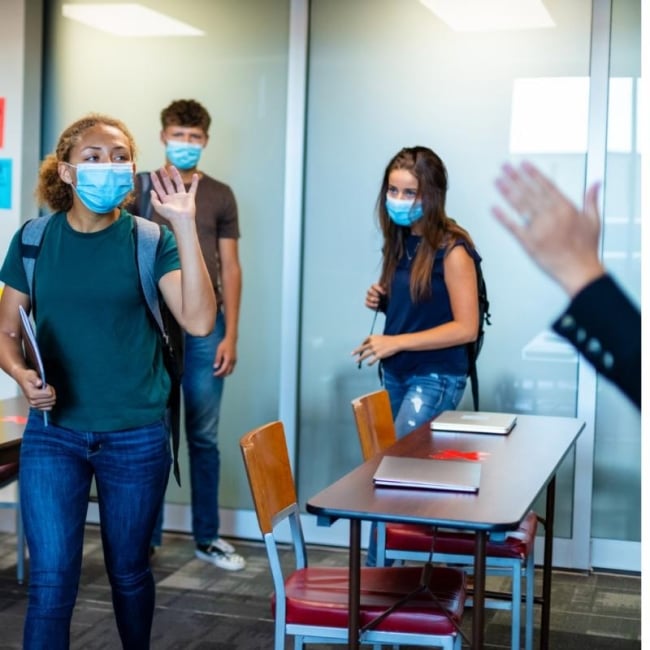You have /5 articles left.
Sign up for a free account or log in.

Istock.com/eyecrave
Figuring out how to spend the first day of class is always challenging, even more so right now due to the global COVID-19 crisis that has moved a number of classes online for the foreseeable future. It’s also the subject of many an opinion piece. Most of these articles advocate doing something active and worthwhile, as the first day sets the tone for the entire semester.
One concerning trend in college classes that got me thinking even more about these issues is the practice of writing rules together as the beginning of the semester.
While this instructional technique clearly has noble merits -- including giving students agency, getting everyone immediately communicating and learning with each other, and laying the groundwork for productive learning -- the end results of such exercises are completely predictable, counter to the unpredictable nature of genuine class discussions.
In particular, any group will quickly decide that students should come to class on time and prepared (if class is face-to-face or synchronous online), should be respectful by not interrupting and speaking only at appropriate times, and should be open-minded and ready to engage with difficult material.
While the exact wording would certainly vary, the end results will always be exactly the same.
Generally, college students have been in classrooms for more than a decade. They fully know the commonplace rules and expectations, even when they don’t always follow them. If anything, due to the rigid learning environments found in most K-12 settings, they know the rules too well! Thus, spending the first day creating more rules doesn’t result in anything new.
In fact, it might be harmful. It’s a learning activity that is too forced in that students are only given the illusion of agency: what they effectively have to create has been predetermined. In some cases, I fear, this active learning strategy could even be used to shut down further active learning by having students create rules amounting to “sit down and listen to the authority.”
To truly demonstrate commitments to active learning, consider adopting alternative practices. For discussion-based classes, strive to use your first interactions with new groups of students to truly show that their inputs are essential.
For example, my face-to-face Introduction to Women’s Studies and Introduction to Queer Studies classes start with a list of three dozen items -- including “let me help you with that,” “boys will be boys,” “take the compliment,” “that’s gay” and “you’re so brave.” The students move the desks and line up against the wall. They take one step forward for every statement that has affected or resonates in some way with them. Students walk back and forth across the room as necessary.
It never fails that in response to a few statements, such as with “must be that time of the month” or “you’re overreacting,” several students will take a huge step, and everyone will laugh. After I go through my long list, I ask, “What did I leave out?” Then, with everyone standing in different places around the room, we talk about everything.
Since COVID-19 has moved my classes online, I’ve turned this activity into a Google Forms survey and discussion board activity, which will be the first task students complete.
In other classes, depending on the course, we take turns reading and discussing my Big Idea History Syllabus or Big Idea Writing Syllabus. Both of these are deliberately provocative to catch students’ attention and emphasize that learning is about anything but facts (whatever facts are). For example, one point I make is “All languages are culturally and socially constructed. English as practiced in the United States today will be unintelligible in just a few hundred years. When communicating -- informally or formally and knowingly and unknowingly -- Homo sapiens are constantly pushing current limits and changing how their languages are practiced.”
We also discuss a variety of important quotations the first class. One of these, a line from The Social Construction of Reality, is visited throughout the semester in all of my classes: “On the one hand, man is a body, in the same way that this may be said of every other animal organism. On the other hand, man has a body. That is, man experiences himself as an entity that is not identical with his body, but that, on the contrary, has that body at its disposal.”
I’ve also adapted these to make use of discussion boards for online classes.
As part of my welcome activities, the class also includes introductions based on a series of open-ended prompts I’ve developed that further helps sets the tone for the semester, such as “descriptions of how much you love cats,” “what is unique about you” and “what questions do you have for me?”
Every class I teach, whether face-to-face or online, has different first-day activities that don’t just tell students that their contributions are vital to our learning environment. They also show students by getting them to contribute from the very start and engaging them with new, relevant course material. These activities also aim to give students opportunities to gain some familiarity and comfort with the classroom space and with other people in the class. Such pedagogies don’t ask students to articulate standards for classroom conduct; they immediately get students learning actively and appropriately -- and even differently.
Deciding what to do the first day makes a near-permanent impression on our students. The specific approach we each take as instructors should vary greatly, but there are far better ways to spend the first day than creating rules when the rules already exist. Find meaningful ways to directly show students that their ideas will shape and reshape the classroom.
True discussion-based, student-centered classrooms are powerful: you never know what students will come up with. That means it's riskier but also much more rewarding.




